An exquisite lineage of hand-captured color: Meet Anong Beam of Beam Paints
- Posted on
- By Susannah
- Posted in Art Projects, Beam Paints, Meet The Maker
- 15

In ruminating on color, it seems that there are no constants. Like Monet's haystacks, freshly turned earth before and after the delicate dampening cast of dew, or the subtle sky around Madame Moon as the sun and stars argue over who will tuck her in at night...color is ever changing.
The same is true for watercolors. The intensity and shadow of even a single color pot depends on the exact conditions at the moment it is being worked. Consider Anong Beam's exquisite hand-crafted watercolor paints. In her native Ojibwe, "-aande" means "it is colored". Piitchi Waawun'aande. It is colored the rich sweet blue of the robin's egg. Chiighii'aande. It is colored the almost-luminous grain of glacial beach sand. Dwaagi Azaadibuk’aande. It is colored the last burst of flaming fall yellow of the changing poplar tree. But, like those exact things in real life, the name doesn't quite cover the whole thing, end of story. The color, like the words, are just our human grasp at getting as close as we can to the impossible stunning truth of the real deal. Living with them, being present in their world, and trying our very best to call the very colors forth into being. THAT is the beauty of the thing.
Raised by two artists in M'chigeeng First Nation on Manitoulin Island in Canada, Anong Beam was taught this power of color and palette from an early age. She would go with her father to harvest hematite pigment in the Lacloche Mountains and watch him prepare his "painting stones" using ceramic bowls, drumheads, or rocks.
Anong's indigenous-owned, female-led paint company is a testament to this rich tradition and artistic legacy.
Made with Manitoulin honey, wildcrafted tree sap, hand-gathered, washed, and sifted stone, and the finest lightfast pigments, the paints themselves are smooth, luscious, easy to work with, beautiful in their pure, steadfastly non-toxic simplicity. And if you're looking to deploy these gorgeous "paint stones", we commissioned custom tabletop palettes to keep the rainbow within easy reach.
Dazzled by her palette and vision, and deeply moved by the true and honest pleasures that come from making and using something that is equal parts ancient and modern, useful and beautiful, we wanted to go deeper into Anong's brilliantly colorful world. So, we sat down and asked her all. kinds. of. questions. From meditations on motherhood to what kinds of tools she swears by, we were delighted to step into Anong's cozy studio and learn more about her paints, processes, and passions.
Where are you right now?
I am in my kitchen that is across the street from where my mum lives and I grew up. I now live with my boyfriend and two sons, my workshop is just out the front door in a small garage bay in a larger lumber and forestry operation that belongs to my boyfriend. This is where I find all the small pieces of wood to repurpose into palettes. All this busyness is in Mchigeeng First Nation, Manintoulin Island, the largest fresh water island in the world, at the very top of the Niagara Escarpment, in Lake Huron.
Tell us about your journey as an artist and your introduction into indigenous painting traditions.
My mum and Dad were both full time artists, and from the time I was born they brought me with them into their full time practice. I was home schooled and did four regular years in high school, then four years art school, then back to work with them, particularly with my father as his studio assistant.
I have very vivid memories of colour, and my introductions to them...the names, smells, their qualities. I really loved going with my parents off into fields, rock cuts, gravel pits. We were always looking for rocks and fossils, clay and crystals, minerals.
How is art-making approached, valued, or limited in your cultural tradition (like: do only "artists" paint? Is there such a construct? Is paint, paintmaking, and painting tied to religion/spirituality (in an official capacity or not)? How is the information shared/passed down?
In my cultural tradition there isn’t really a way of dividing it off as a task "over there", or something separate. There is no real word for it as a separate pursuit really, there are words for painting and drawing, writing, and making images, "Mizzins", and there is the knowledge that it is a powerful thing.
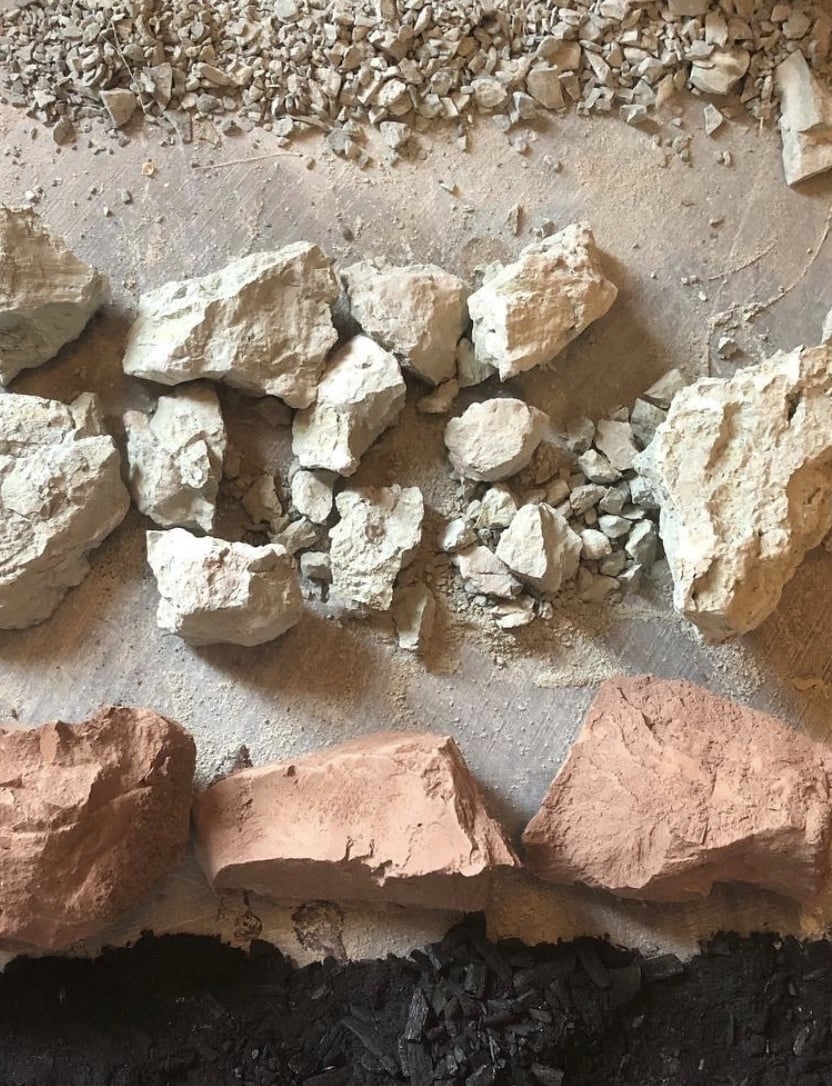
While watercolors span geological epochs and infinite artistic traditions, when many people think about "watercolors" their thinking is limited to English Landscape painting. How does your perspective on indigenous painting culture relate to the intersection of traditions?
Really neat question!! I remember learning watercolour as a medium that had different ways it could express. It was the pigments my dad dug, and that we packed in cloth bags, and filed into dust, painted on drums or ceramic, it was also the gold Pelikan paint pucks I had in my travel box. Our house was full of books on Turner, the Wyeths, and also ledger drawings, the Lascaux cave paintings. Gaugain, Monet, Joseph Beuys. I really saw the whole pantheon. Spread out that way, that it seemed to me to all be majestic and equal in its expression. Although I had a very unusual upbringing, I believe each culture brings a viewpoint, and we are at a fantastic time in that they are all combining, and recombining at an incredible rate. It's almost absurd now to imagine that one would stay stacked in ones own cultural silo, when the possibilities for collaboration with others or even in isolation with oneself and all the myriad possibilities laid out by the sheer access to information relating to others practices and such.
How did Beam Paints the company get its start? Were you making paints for yourself? Was there something "missing" from other paints available?
I think the first thing I made was a non toxic oil painting medium. I was pregnant with my second son and really into oil painting, I always disliked the heavy solvent smells anyway, and I really wanted to keep painting. I tried some eco alternatives to turpentine, but I didn’t like the super orange smell or the cost. I have always been a deep reader, and I found a mention in Max Doerners 1922 book "The Materials of the Artist and Their Use In Painting: With Notes on the Techniques of the Old Masters". I worked using a blend of some plant ingredients mentioned in there. Then I left it at that really for a long time. I briefly had an art supply shop, I really disliked that people would ask about the paint, where it came from, and I would have to say these really far away places. Then the store folded, I got divorced. I was living on my mum's couch with two kids and I thought "well, now's a good time!" I started with oil paints, and then moved into watercolours. I wanted a paint that felt great! And with all the ingredients, it has been incredibly satisfying to make it exactly wonderful! Full of colour, not wimpy, lush, jumping up to meet your brush!!
Tell us about the process of making the paints! Take us through it step by step...
I make a coffee and go into my garage shop, I feed my canary "King Birdie", I water my plants and put on some music. I mix up my binder the night before as it needs time to settle and hydrate. I choose the pigments I’m going to be working with, put on gloves and a dust mask and start mixing and mulling and milling!
Where do the paints get made? What is that space like?
My garage opens up in the summer to look out onto a busy yard, not like a house yard but a full forestry operation yard, so it's not uncommon to hear birds singing in the trees and then a giant machine drives by, or people are welding things. Lots of busyness.
Do you, personally, exclusively forage the pigments? What does that look like? Do you have any special gear/holders/baskets/tiny pickaxes (eeeeeee!!!) that you take with you? How did you learn?
I have baskets, goggles, and small pick axes...those are my boys' favourites! They love to go out doing these kinds of things with mama!!
How many pigments are strictly geological or are any "living" (from trees or flowers or insects etc.)?
I do some special runs of fox grape lake or sumac, these come from plants. Some, like the grapevine charcoal black, are living then carbonized, then ground and used.
Where else do you source pigments from?
I get a nice red from a nearby cliff, and a green from Ice Lake, a cream from a place called La Cloche Island. For the more exotic colours, I get pigments from Society of French Earths, they specialize in earth pigments. I also get metallics and other synthetic pigments from Kama Pigment in Montreal. Also "synthetic" is not a bad thing when it comes to pigment. These days many people want it to be "all natural"...but many "natural" mineral pigments are made of heavy metals like lead and cadmium. Synthetics let us have the colour without the toxicity.
What about the sources of the other ingredients? Who keeps the bees that make the Manitoulin Honey?
Me and my boys keep two hives and are thinking of expanding the beekeeping aspect because it’s so much fun. I also get honey and beeswax from Isle Away Honey who are around the corner at Big Lake.
Tell us about the choices you've made based on sustainability and safety/non-toxicity in your paint ingredients.
I insist on non toxic completely, if it’s even milldly irritating I wont use it, period. I research all the colours to make sure, I have the SDS data sheets on my website. And I’m looking into getting my ACMI non toxic certification, although thats quite pricey but, it's peace of mind.
Do you mix colors yourself to achieve certain hues or are any of the pigments left "pure" in their natural state?
Do you mix colors yourself to achieve certain hues or are any of the pigments left "pure" in their natural state?
Mostly they are pure, but some are mixes, I like to make gouache because they are so nice on dark papers!
How do you decide which colors to mix and make? Is it limitless? Is it based on the abundance of certain pigments? Or what's "missing" from your collection?
It's pretty limitless!! I have been really taken with getting a full spectrum of true "rainbow colours", like the brightest blues and purples, reds and yellows, I think I started with primaries and now I’m in secondaries. I am reaching into browns and oranges and purples now, also more earth colours and local colours as people enjoy them.
Have you ever had a surprising discovery in your process?
All the time!! I’m always finding out new things. Lately it was that charcoal wont be bound by a binder like other pigments. Even in oil paint, the paint will dry but the charcoal can still be smudged around as if you drew it on.
What are your favorite pigments to work with? How are they different?
I love earth pigments! They are so easy to mix and they smell great! When they get wet it’s like you’re standing in the rain!
Are there any interesting differences in the pigment behavior/result from the same material treated different ways?
Mainly in plant based dyes using them to make ink or lake pigments is a very wild process, lots of variations. I think sumac is the best example. Boiled down it becomes red, and then when you push the pH with a base it reacts a lot bubbles and foams and then turns a great sage green.
How long do your paints keep?
They will keep forever in the dry state. I think watercolours like mine have been found in ancient Egypt in the pyramids!
Your paintstones and Tis'gan travel sets are so gorgeous. Tell us about those designs. Where the design inspiration came from, any considered details.
Your paintstones and Tis'gan travel sets are so gorgeous. Tell us about those designs. Where the design inspiration came from, any considered details.
When I was first starting to make watercolours, I had small bits left over that I couldn’t throw away, i loved rolling them in my hands. I loved the tactile send, and I loved that they reminded me of my dad and his paintstones. It was really that moment that helped me connect my love of colours and what I learned as a youngster to my practice today. Sharing that state of wonder and connection with the natural world in some small family way. And for the tis'gan, I wanted to make a travel box! A plastic free travel box! And my friend Marianna has a company making bags with waxed canvas so I went over to see her and we played with lots of ideas and came up with that design, there is also a "minjeemin" which I made after that with a "box top" out of waxed cloth to use as the water reservoir.
Tell us about the names of your colors. (We know, we know, it's like "define 'language' and 'history' and 'the human experience' real quick, thanks!"... but you speak so beautifully about the journey of color and the naming of color and we want to know more!).
I love the names of colours, its so personal and universal! I love how there are many names for the same colours! It is a very romantic and wonderful thing. Colour affects people in such a strong way, that it is a physical thing that evokes emotion.
I personally love the German names, Koenig Blau, and the French, and I love to name them in my language. Ojibwe, great ocean "gchi gaaming"
Similarly complex (but beautiful) question we ponder often: How does your family narrative—learning from your parents and now including your children—inform your perspective on the making of art, the running of a business, the role of the mother, and the continuity you are working to forge between all of those traditions?
That’s a neat question, I suppose its a lot like not seeing differences between watercolour lineages, I just don’t see a wall there. I think it's almost like absence or closeness, you feel absence and it makes you look for closeness. If I am too much on my own, I miss the boys and we go out together looking for rocks. It keeps you close to the things you love. I suppose that is how it became inevitable that I would be doing this! Making paints with loved ones. I think people feel that too, I get excited when I make something i know people will love. In an expanded way it's like they are part of my family under this umbrella of colour.
What does a day in the life of Beam Paints look like?
Wake up oats and coffee with the boys, on the bus, feed the dogs, go in the garage, read orders, meet up with great pal Meg who helps me pack them up. Look at what’s low and maybe needs to be made again, make paint, beeswax cloth, all nice smelling jobs!
What do you love about working with paint and pigment/about your job?
What do you love about working with paint and pigment/about your job?
Man, I love the feeling of it. I get to feel the colours so much and be so close to so much of them...it's a physical love.
What's your favorite color (ha!)?
Man so hard! I remember green in an intense way! It's one of my first memories, my mum points up a canopy of spring maples, sun filtering through, "chartreuse"
The second would probably be peony pink red, the same colour as cherry popsicles! I used to sneak into my neighbour's yard and lay on the ground under their large peony garden, and smell the earth and look up through the petals at the sun.
THANK YOU ANONG!
Ahhhh, we could just live inside all of these beautiful colors and stories (with a trusty Foundry-made painter's palette close to hand, of course). And, as if you needed more proof that Anong is a star-crossed sister, these buddies—her very own pair of four-legged-ice-cream-fiends—speak for themselves:
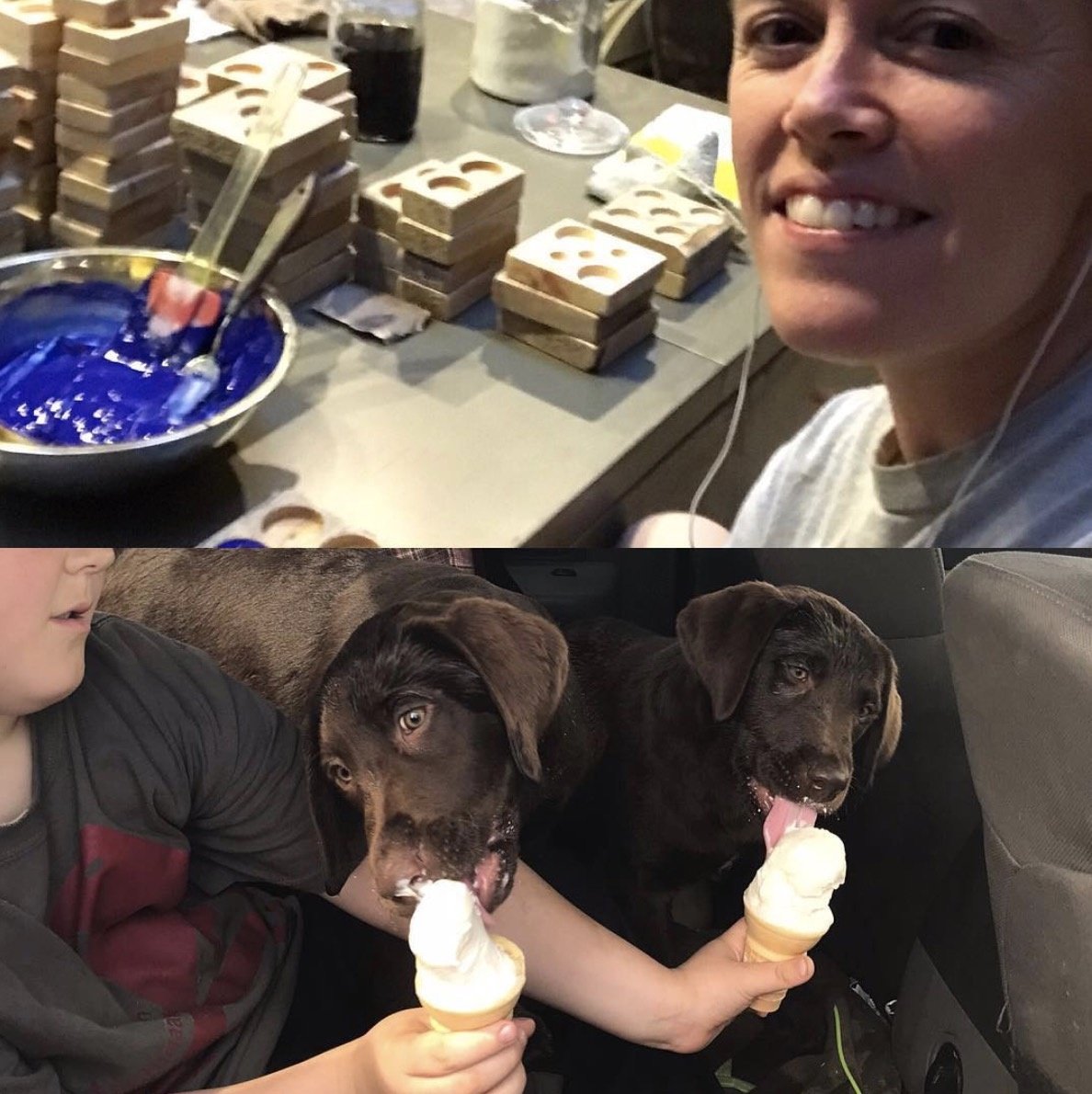

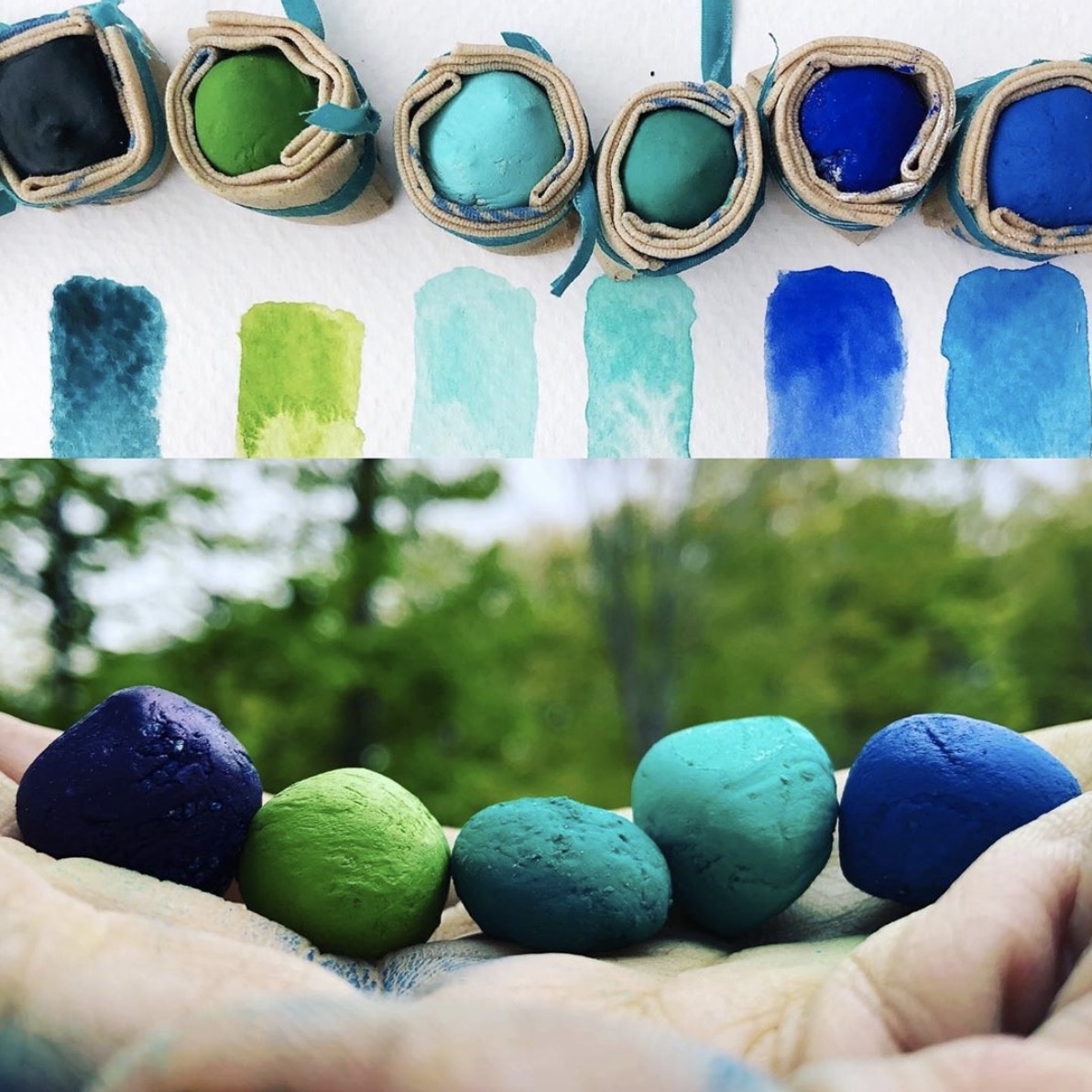

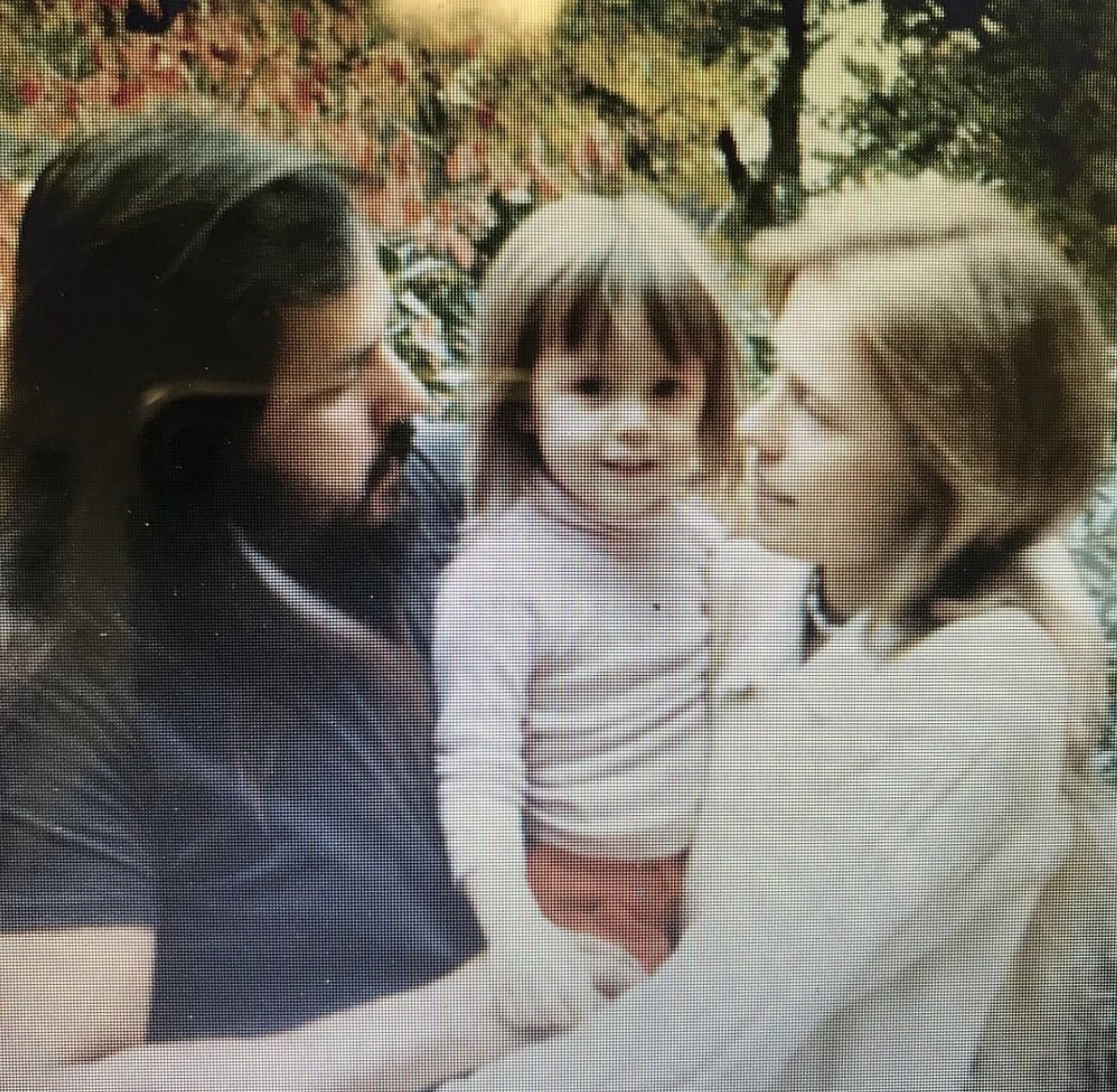
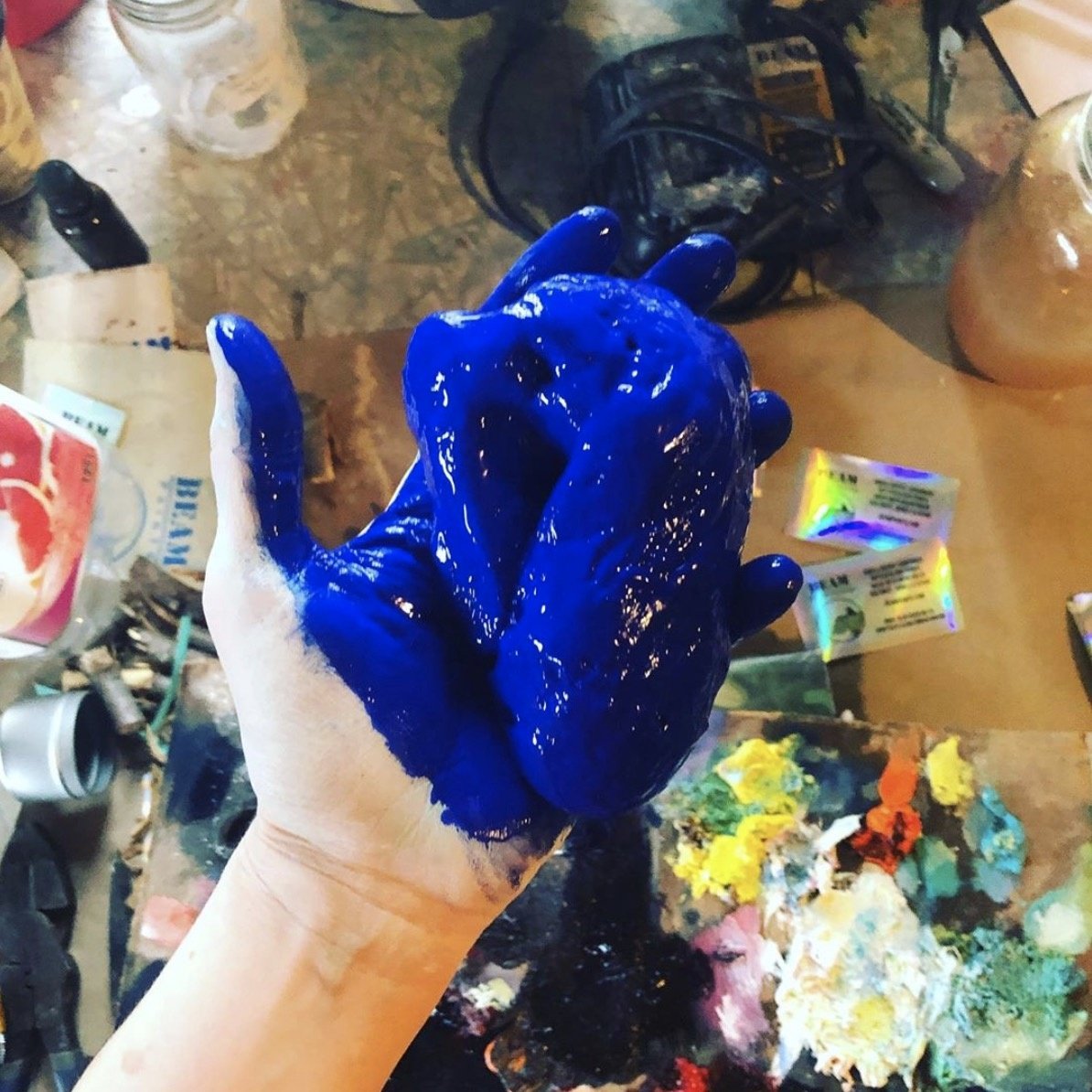










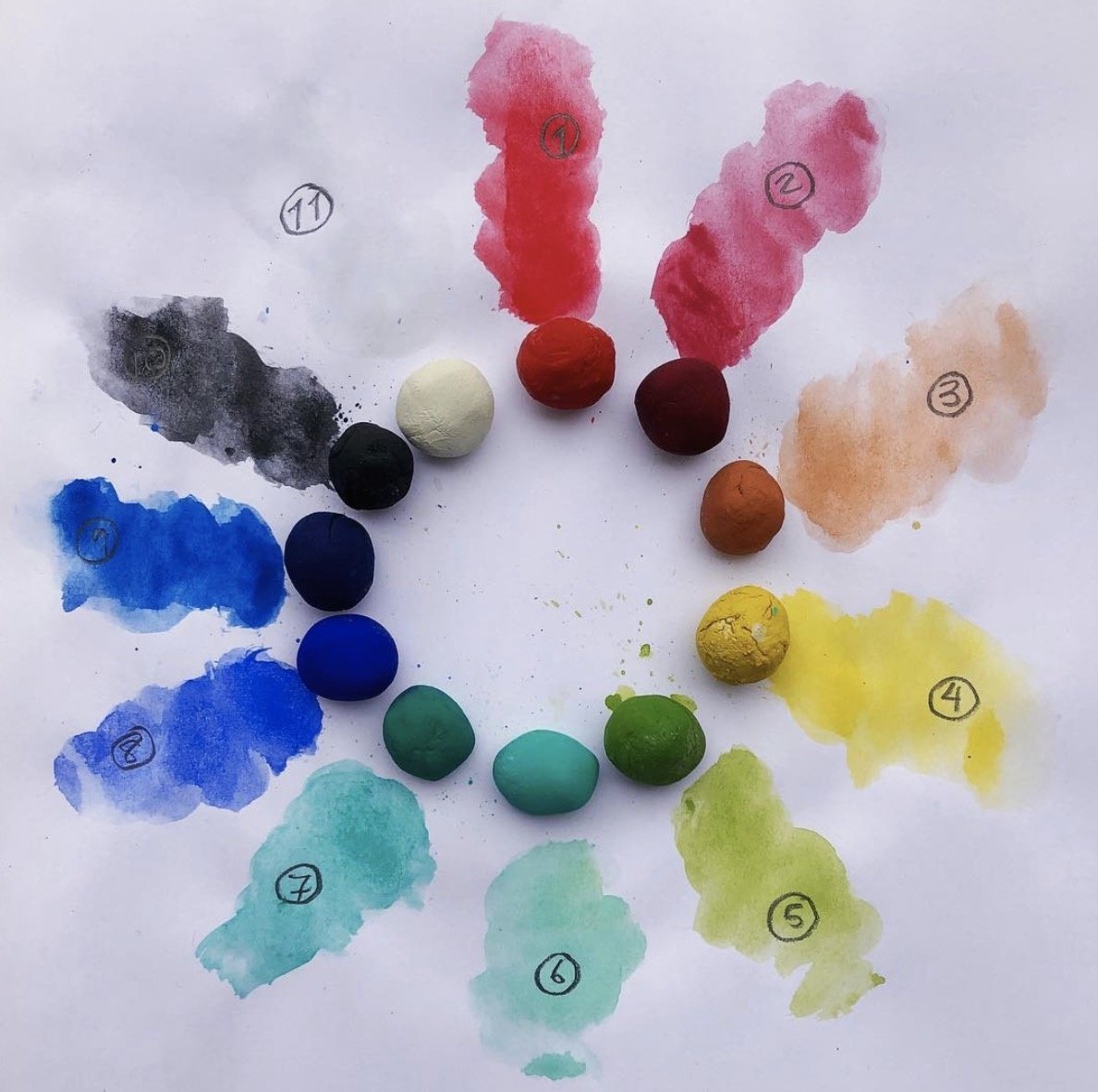
What a touching and beautiful life-story. Thank you for sharing it with us. I’ve just placed my first order - a set for my 81 year old mother who has taken up painting in the last few years. I’m so excited to gift these beautiful paints to her. It was almost impossible to decide on which set to give her. They are all so deliciously gorgeous! I am about to take up watercolour painting too, so I suspect I’ll be ordering some for myself as well. Thank you again. I’m so looking forward to seeing these beautiful paints with my own eyes.
I recently purchased beam paints for myself and have already bought some for my daughter whose birthday is in December.
I love the colours and how responsive these paints are. I want all the colours! I purchased them to give me a kickstart into painting again.
So impressed!! I have been a long time Schminke user, then I started using their Super Granulated line. I was combining those with Skrim for the shimmer. Beam blows this out of the water. Beautiful colors, great blending without too much unwanted “cauliflower-ing” or bleeding. Just amazing.
I am so intrigued and excited to try my new palette! I hope my meager skill can do these colors justice. I did buy the whitetail deer card so that I can cheat a little to start out!
I am SO happy to welcome you, Joanne! What a lovely comment.
Happy painting! Warmly, Anna
Hello,I just placed my first order ...I'm sure of many more to come! Can't wait to start painting with these magical gifts from Mother earth! Thank you migwich
Diana that's such a beautiful connection! Thank you so much for sharing and we hope your daughter loves them as much as we do <3
Good day!
I am so excited to to read this article . I have now purchased these paints for my daughter who is an artist. She will now be painting with paint purchased from the area her Great Grandfather was born and raised.
Received as a Christmas gift, so excited, finally paints that are ethical and environmentally conscious, looked forward to the feel.
Excellent questions, Susannah; I loved learning more about your relationship with your materials, Anong! I produce Material Feels, an art materials podcast, and eavesdropping on your studio / learning more would be a dream come true.
Great article! My paints have all arrived to the UK safely, I absolutely love them & are even better in person!
Oh I'm so glad you read the interview! Thanks so much Patricia!!
I just purchased some of these paints from you this week (curbside pick up, simple, thank you) and I am over the moon! They’re divine. I need more.....see you soon!
Excellent article. I plan on visiting this summer.
I am so excited! Will spread the word.